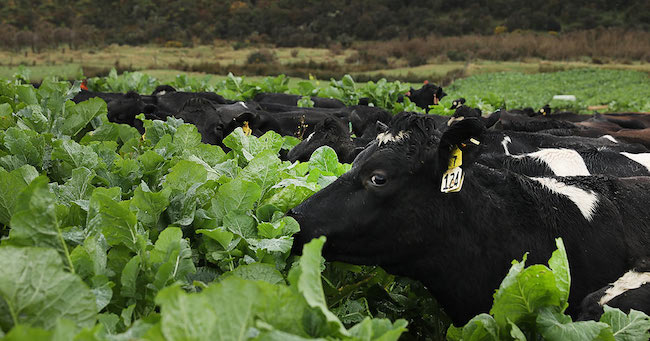Haying and grazing season is underway across North Dakota, with much of the forage supply consisting of small grains and cover crops.
Although these crops offer flexibility in cropping systems and a great source of livestock feed, they could pose a risk of nitrate toxicity, according to Janna Block, livestock systems specialist at North Dakota State University’s Hettinger Research Extension Center.

Nitrate toxicity is a potential issue for livestock consuming small-grain forages (wheat, oats, rye, triticale and barley), sorghum and sudangrass, and corn used for hay or silage. Although nitrates typically are not an issue on rangelands, pastures with nitrate-accumulating weeds such as kochia, lambsquarter, pigweed, quackgrass and Russian thistle also may be a problem.
“Nitrate is a common form of nitrogen found in the soil, which is taken up by plants and converted to protein through the process of photosynthesis,” Block explains. “Under normal growing conditions, nitrate does not accumulate in the plant. However, when plants encounter stressful growing conditions, photosynthesis is inhibited and the potential for accumulation of nitrates is increased.”
When beef cattle consume increased quantities of nitrate, it overwhelms the ability of rumen microbes to convert nitrate to protein. Nitrate is converted to nitrite, which is 10 times more toxic than nitrate.
Excess nitrite is absorbed into the bloodstream, which removes the blood’s ability to carry oxygen and causes the animal to suffocate. Cases of lower-level, chronic toxicity also can occur. In those cases, producers may observe weight loss, night blindness and abortions in their cattle.
“Most people associate the potential for increased risk of nitrate with drought, and this is true,” Block says. “However, prolonged cool temperatures and cloudy conditions also can disrupt the conversion process and cause nitrate to build up in the plants.”
Although moisture conditions have been adequate across much of the state this spring, many producers in the northern and central areas are experiencing drought conditions. In addition, forage growth has been impacted in some areas by an unseasonably cool spring.
Here are several strategies to reduce the risk of nitrate toxicity:
• Control potential nitrate-accumulating weeds in pastures.
• Avoid cutting forage or allowing cattle to graze it in the morning, when nitrate levels are at their highest.
• Consider raising the cutter bar when harvesting forage because the majority of nitrates accumulate in the lower one-third of the stem.
• Delay the harvest because nitrate levels generally decrease as plants mature; however, this strategy increases the risk of a loss in forage quality.
“The most important recommendation is to test for nitrates prior to grazing or haying,” Block says.
Many NDSU Extension offices have access to a Nitrate QuikTest, which is a screening tool to assess whether nitrate is present in standing forage. Block suggests producers collect at least 20 stems while they travel in a zigzag pattern across the field. Stems should be clipped to ground level.
“If nitrates are present in the sample, producers should delay grazing or harvest for several days and then re-test,” Block says. “Samples then also can be submitted to a laboratory for quantitative analysis to further assist with management decisions.”
The Nitrate QuikTest is not designed to evaluate nitrate content in harvested forages. If forages already have been cut and baled, the best strategy is to use a bale probe to collect core samples from a minimum of 20 bales per lot of forage and submit them to a laboratory for analysis. A lot is defined as hay harvested no more than 48 hours apart from within the same field.
“Producers need to understand the potential risks of nitrate toxicity and the factors leading to nitrate accumulation in plants,” Block says. “Determining actual levels of nitrate present in hay is critical for being able to utilize nitrate-containing forages safely in rations for beef cattle.”




Post a comment
Report Abusive Comment